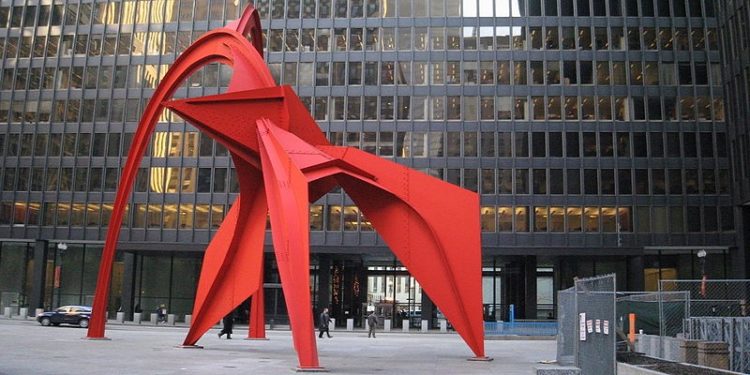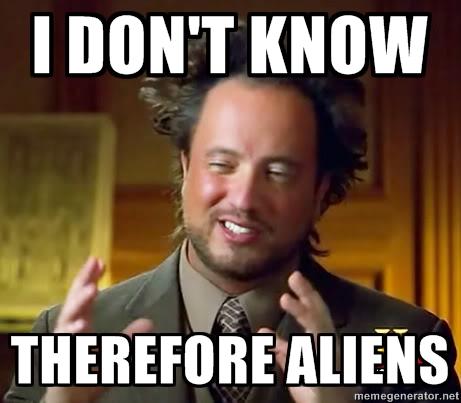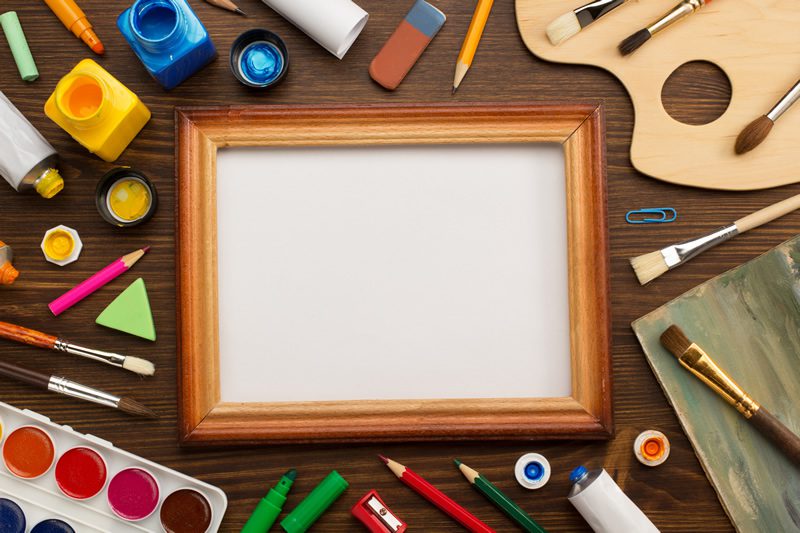Using Art in your Games, P3

Last time we talked about some art vocabulary that you can use in your games. Because this author isn’t going to turn this series of articles into a dictionary of art terminology, this article will be picking up with how to use the terminology in your game, what the art is, where the art was done, how it was done, and how characters might use it.
How to use the Terminology in your game?
Now that we have a base of terminology from Wikipedia or The Art Story, we need to know how to incorporate them into our games. An obvious suggestion is to figure out what the art is trying to say, so that we can see if it’s able to match up with an existing term… even if that term isn’t quite the right type of art. For instance, elven artistic taste might be described as Arabesque or Baroque due to its connection with nature and fanciful scrollwork, while the skull themed art of the orcs might be described as having a death metal vibe. When describing a culture’s art think along the following:
- How clean are the lines? Do they go every which way, or are they clean? Does the art contain fancy scroll-work or wavy lines?
- What are the motifs? Nature? Religious? People? Scenery?
- Is it concrete or abstract?
- Is it realistic or not?
- Is it modern looking, having a quasi-mechanical vibe?
- Does this depict a moving scene or are the figures therein static?
What is the art?
There seems to be an ongoing conversation in the artistic community to define art. But some art is unable to have neat boundaries. Is it a painting? Is it a sculpture? Is it somehow a combination of both? Is it music? Is it just random noise? Or is the random noise that is created art in and of itself? Is the art some sort of performance such as a play, breakdancing, or tap dancing? Are there strict rules for the performance or is it freestyle?
There’s another type of “what” that needs to be considered: what did the artist intend it to be. There are the sketches of the courtroom artist, which shows proceedings. Similarly, there might be artwork that is done to record the events for future generations or to make a study of a plant, animal, or monster. Then there are impressionist paintings that invoke a feeling but aren’t meant to be photorealistic. There’s also artwork that is meant to be symbolic and open to interpretation by the viewer. Finally, there’s artwork that is exactly what it is, as in a glass case filled with surgical instruments… meant to have no interpretation whatsoever.
Once the type of art has been established, we can now examine other aspects of the art.

Where was the artwork done?
The artistic community is always watching each other, and oftentimes artists are either consciously or subconsciously influencing each other. In a day and age before instantaneous worldwide communication such as is possible in today’s age with the internet, these artistic communities were a lot more localized. This aspect can (and should) be prevalent in your games for added realism. The more isolated the community, the more individual, the more unique, the more radical the artwork can be. When someone who is outside the community brings new ideas into this type of isolated community, new art can explode onto the scene, with such vibrancy that was impossible before the newcomer.
Art is an ongoing conversation. One artist will make this, and another one will see it. They may not have the first artist’s skill… or even if they do, they don’t want to be labeled as a copyist or a hack. In response, they will create their own work, taking what they like out of it (and what their skill will allow them to create), making changes. A third artist will see what the previous two did and decide to add something else to the mix. The first artist will see what the second and third did and will create art in response to it. Even though the artistic communities don’t think of their works being influenced by one another, these artistic influences and conversations are how various art movements were formed (hence why the background of artistic movement vocabulary was important in the previous article).
The question of where also ties into the availability of materials. Some examples of how this might play out are if something that is normally used, other materials may take their place. For instance, prisoners using colored M&Ms candies to paint, certain materials such as elephant ivory and eagle feathers being outlawed. Another example is some types of materials are simply unavailable due to their location. For instance, you would never find something such as buffalo horns or hide in Europe before American colonization.

How was the artwork done?
“How” is a matter of technique as well as technology. An example of this is “how” of a painting, we are talking about the brush techniques, as well as the technology needed to make the brushes as well as the paint. If neither the specific brushes nor paint that are needed to do a painting aren’t available because the technology didn’t exist, that means that what the character in question is looking at was done in a different manner, or perhaps the character is mistaken when and how it was done. Another example is the various soak-stain techniques of lithography, where differences in ink, time, and materials used for the print will grant differences in the final product.
Characters using art
Characters might use art in a variety of different ways. They might decorate themselves or other characters with tattoos. Alternatively, they might be a struggling artist, looking for their next inspiration. They might graffiti walls of places they’ve been – either to mark where they were so as not to get lost… or as an ongoing piece of artwork that can only be experienced by going from place to place. Characters might also have decorated arms or armor and thus be a walking piece of art. Finally, they may participate in the other arts: music, theater, dance, etc.
Closing Thoughts
As we defined in the first article, art is a diverse range of expression or application of creative skill and imagination from an intelligent mind or mindset, producing works to be appreciated primarily for their beauty or emotional power. Art, by its very nature, is a creative force that makes the viewer ask themselves “what is this?” “to what movement does this belong?” “what should this be called?” “how and when was this done?” By using the terminology, we can bring use the real world of art as a touchstone to our fantastic worlds.
Furthermore the characters are able to get in on the art by being either artists of various stripes (painters, sculptures, musicians, actors, writers), brokers, agents, aficionados, or thieves who hope to find art and make a profit by selling their findings to the highest bidder. Maybe an art dealer hired the PCs to find art for them in their adventures, and not knowing what they have, sell it for a pittance. Or maybe the PCs are the brokers themselves. Think how awkward it would be to have the PCs run into someone from the culture whose art they have stolen or misappropriated. There’s a million ways to bring the world of art into your games.
I hope that I have inspired you to use more art in your games. As always, feel free to like, reshare, and comment.



